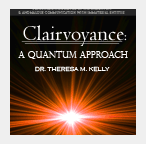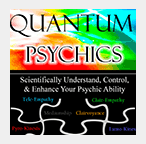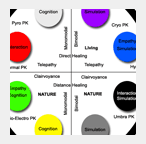Remote Viewing
Parapsychology Articles, Papers and Books
Home > Articles > Psychical Phenomena > Extrasensory Perception > Remote Viewing
![]()
|
| NEWSLETTERS |
| Get the best from QPsychics.com in your inbox! |
|
| PARAPSYCHOLOGY ORGANIZATIONS |
"With confidence in the importance of utilizing the investigative mode of the established sciences in order to inquire into the authenticity and to potentially explain the nature of psychical phenomena."  |
 |
 |
 |
 |
Real-Time System Model
Remote Viewing is the practice of visually seeking out impressions regarding a distant or unseen person, object, or event utilizing paranormal means, and Remote Sensing includes more than the remote visual mode, such as the auditory mode. Both remote viewing and sensing have been related to clairvoyant cognition and telepathic cognition, but because remote viewing/sensing refers to specific controlled processes, this view is not widely accepted. Remote viewing and sensing appears to include temporal features (i.e. postcognitive, contemporaneous, and precognitive ESP). The following is a supposition in regards to remote viewing and remote sensing in regards to contemporaneous clairvoyance (i.e. the phenomenologically indirect knowledge of a current object or event via Nature). I have hypothesized that Nature, in respects to real-time monitoring and manipulation of information, is based on two major subsystems, several minor subsystems, and a central executive subsystem, which is responsible for the supervision of information integration and for coordinating subsystems. I assume one subsystem stores sound-based information and continuously produces its contents in a loop as opposed to linearly. The other subsystem I assume is visuo-spatial, which stores visual and spatial information. The visuo-spatial subsystem can be further broken down into a visual subsystem in which the subsystem monitors and records the shape, size, color, texture, etc. of objects and a spatial subsystem in which the subsystem monitors and records the orientation or location and possibly the momentum of objects. The central executive, among other activities, I assume is responsible for the directing of system attention to relevant information, whereby storing irrelevant information separately as a means of information organization. In addition, I assume the central executive responsible for coordinating the systems many processes operating simultaneously. In addition, an episodic subsystem may exist in which integrates the aforementioned sound and visuo-spatial subsystems, and information pertaining to other subsystems. This subsystem, or possibly a component of a subsystem, I consider episodic in that I assume it binds visuo-spatial, sound based, and other relative information into a unitary episodic representation or event. In regards to real-time subsystem associations with an assumed probabilistic subsystem, the most crucial requirement of the real-time subsystem would be predictability as a means to eliminate possibly delays between events and system response, which could otherwise result in reduce performance. In other words, either the accuracy of real-time information is subject to probability if received by an experient at the exact time of an event, or the information will always be accurate, but subject to delay. This delay is not assumed the result of the system, but rather the experient, as signals from different sensory modalities, including ESP, are processed at different speeds in neural regions. These signals need to be aligned in time and correctly tagged to outside events to be useful to the experient as a whole. All of this of course takes time, along with the possibilities of distortions in temporal judgments (e.g. causality, attentional shifts, adrenaline, eye movements, etc.).
(Adapted from the book “Clairvoyance: A Quantum Approach” by Theresa M. Kelly, MsD.)
|
|||
Related Articles |
|||

